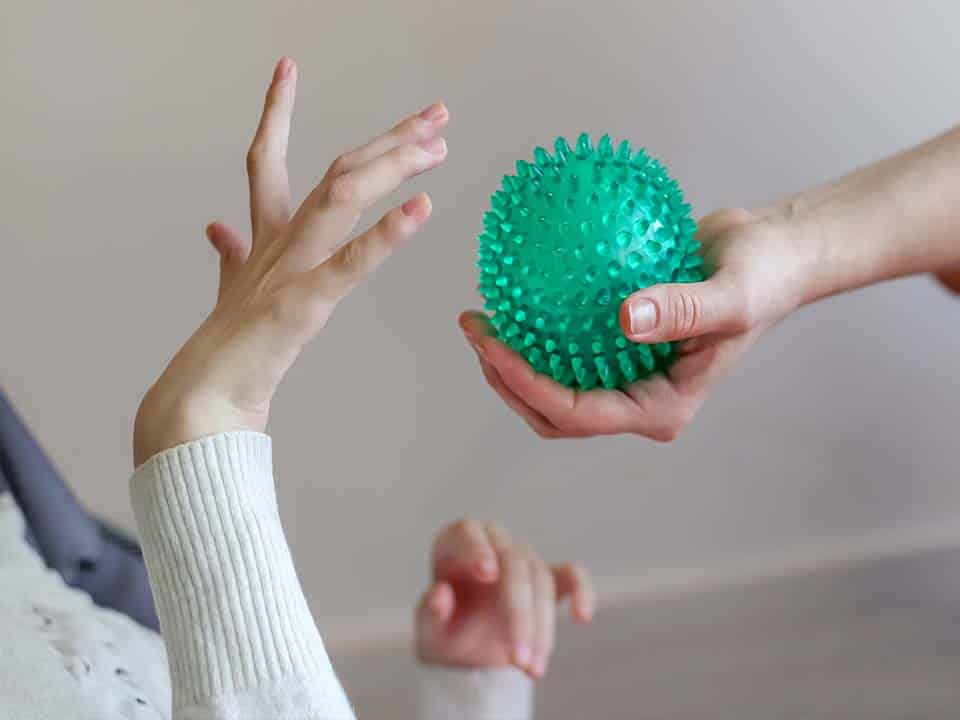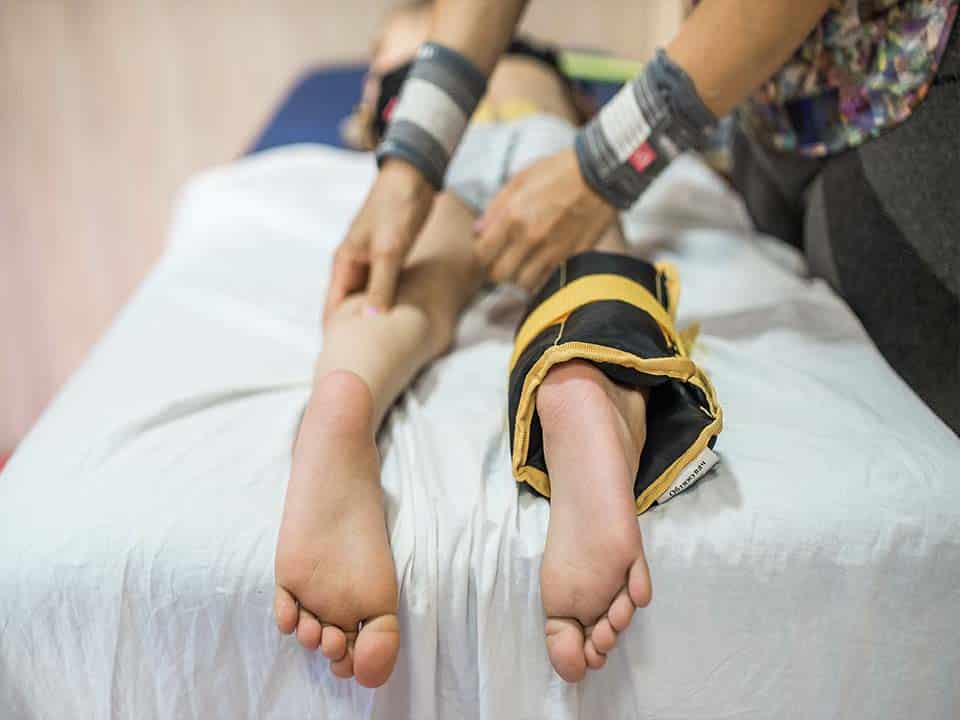Cerebral Palsy
ROB LEVINE, MEDICAL MALPRACTICE LAWYER
VICTIM OF CEREBRAL PALSY? GET AN ATTORNEY
Cerebral palsy is a movement disorder caused by brain damage that occurred during pregnancy, labor, or delivery.
GET HELP NOW! THE HEAVY HITTER® IS HERE FOR YOU
CONTACT US NOW FOR ASSISTANCE 24/7. NO FEES UNTIL YOU WIN
CEREBRAL PALSY CAUSED BY BIRTH INJURY
This abnormal brain development or brain damage, referred to as hypoxic-ischemic encephalopathy (HIE), typically occurs during or after birth if there is a significant amount of oxygen cut off from the brain. HIE can sometimes occur due to the negligence of medical professionals. It is important to recognize when such negligence occurs.
Examples of medical negligence resulting in birth injury include:
- Failure to monitor mother and child properly
- Failure to respond to signs of fetal distress
- Improper use of birth tools
- Negligent cesarean delivery
- Mismanagement of shoulder dystocia
SYMPTOMS OF CEREBRAL PALSY
Identifying cerebral palsy early on can have a significant impact on how well the treatment works.
There is a wide variety of symptoms that can present themselves, leading to these birth injuries including:
- Motor development issues
- Postural abnormalities
- Abnormal muscle tone
- Spastic muscles
- Difficulty walking, sitting, or standing
- Speech, vision, and hearing impairments
There are also long-term effects that can result in additional complications. These include:
- Difficulty walking, sitting, or standing
- Learning disabilities
- Cognitive difficulties
- Epilepsy
- Behavioral issues
- Joint problems
TYPES OF CEREBRAL PALSY
Spastic Cerebral Palsy: This is the most common type of cerebral palsy. It is characterized by stiff, spastic muscles and difficulty controlling muscle movement.
Athetoid Cerebral Palsy: This type of cerebral palsy is characterized by uncontrolled, twisting motions, and poor posture.
Ataxic Cerebral Palsy: This type of cerebral palsy is characterized by shakiness and tremors.
Mixed Cerebral Palsy: A combination of two or more types of cerebral palsy.
DIFFERENCE BETWEEN BIRTH DEFECT AND BIRTH INJURY
Although birth injuries and birth defects are often confused with one another, there is a distinct difference between the two.
Birth defects occur during pregnancy before the baby is born. They are usually the result of genetics or occur if the mother is not in good health. Common birth defects include heart issues, Down syndrome, spina bifida, and cleft lips.
Birth injuries occur during labor or soon after delivery. They are usually the result of complications, but other times can be the result of medical negligence. Common birth injuries include birth asphyxia, cerebral palsy, Erb’s palsy, brachial plexus, cephalohematoma, and brain injury.
Many children who develop cerebral palsy before birth have additional conditions such as epilepsy or autism spectrum disorder. However, cerebral palsy can also be a result of a birth injury. If your child is otherwise healthy, this may indicate that they experienced a birth injury due to medical negligence.
HOW WILL CEREBRAL PALSY EFFECT MY CHILD’S LIFE?
The effect of cerebral palsy on a child’s life varies based on the severity of their condition.
Overall, cerebral palsy is known to have an impact on:
Physical limitations: Many children with cerebral palsy experience limited mobility and difficulty with coordination. According to the Center for Disease Control (CDC), 58% of children with cerebral palsy walk independently, 11% walk with the help of a mobility device, and 31% have limited or no walking ability.
Nutrition: Many children with cerebral palsy have trouble with nutrition and digestive health. It is not uncommon for those with cerebral palsy to have other conditions that make it difficult to obtain the proper nutrients. Cerebral Palsy Guide informs that these conditions include oral-motor dysfunction, gastroesophageal reflux, chronic constipation, swallowing disorders, or abdominal pain.
Social relationships: Due to developmental delays, anxiety, and self-esteem issues, children with cerebral palsy can often struggle when it comes to social relationships. However, a study conducted in 2008 by the Foundation of Rehabilitation, 98% of young adults with cerebral palsy reported that they participate in one or more recreational activities involving social groups.
Independent living: Depending on the severity of the case, some people with cerebral palsy are unable to live independently. Rather, they choose to reside in places where there is access to medical care and support. This could mean living in a group care home, in an assisted living community, or staying with family.
Treatment: Several treatment options assist with cerebral palsy symptoms including physical therapy, occupational therapy, and speech therapy. Treatment for cerebral palsy can be costly and lasts for the entirety of the child’s life. The Center for Disease Control estimates that the cost of treatment for cerebral palsy throughout a child’s life can exceed $1 million. The medical expenses for a child with cerebral palsy are 10x more than that of a child without any medical conditions.
STATUTE OF LIMITATIONS
The statute of limitations is the legal requirement that states how much time you have to file a lawsuit after an incident has occurred. Although they are similar, the requirements for filing a lawsuit vary from state to state.
Rhode Island: Medical malpractice lawsuits must be filed no later than 3 years after the day of the incident. There are exceptions made in cases when the patient is unable to recognize the harm until later. In these cases, the patient must provide proof explaining why there was a delay in noticing the malpractice.
Massachusetts: Medical malpractice lawsuits must be filed no later than 3 years after the day of the incident. There are exceptions made in cases when the patient is unable to recognize the harm until later. In these cases, the patient has 3 years to file the lawsuit according to the first day in which they noticed that malpractice had occurred. They must then provide proof explaining why there was a delay in noticing the malpractice. Regardless of when the harm was noticed, a lawsuit cannot be filed any more than 7 years later than when the incident occurred.
Connecticut: Medical malpractice lawsuits must be filed no later than 2 years after the day of the incident. There are exceptions made in cases when the patient is unable to recognize the harm until later. In these cases, the patient has 2 years to file the lawsuit according to the first day in which they noticed that malpractice had occurred. They must then provide proof explaining why there was a delay in noticing the malpractice. Regardless of when the harm was noticed, a lawsuit cannot be filed any more than 3 years later than when the incident occurred.
Although cerebral palsy occurs before birth or soon after delivery, it is usually not diagnosed for a couple of years, as the child begins to develop motor skills. Therefore, to understand your timeline for filing a lawsuit, it is important to know the date on which the medical malpractice occurred as well as when you first started noticing symptoms.




















